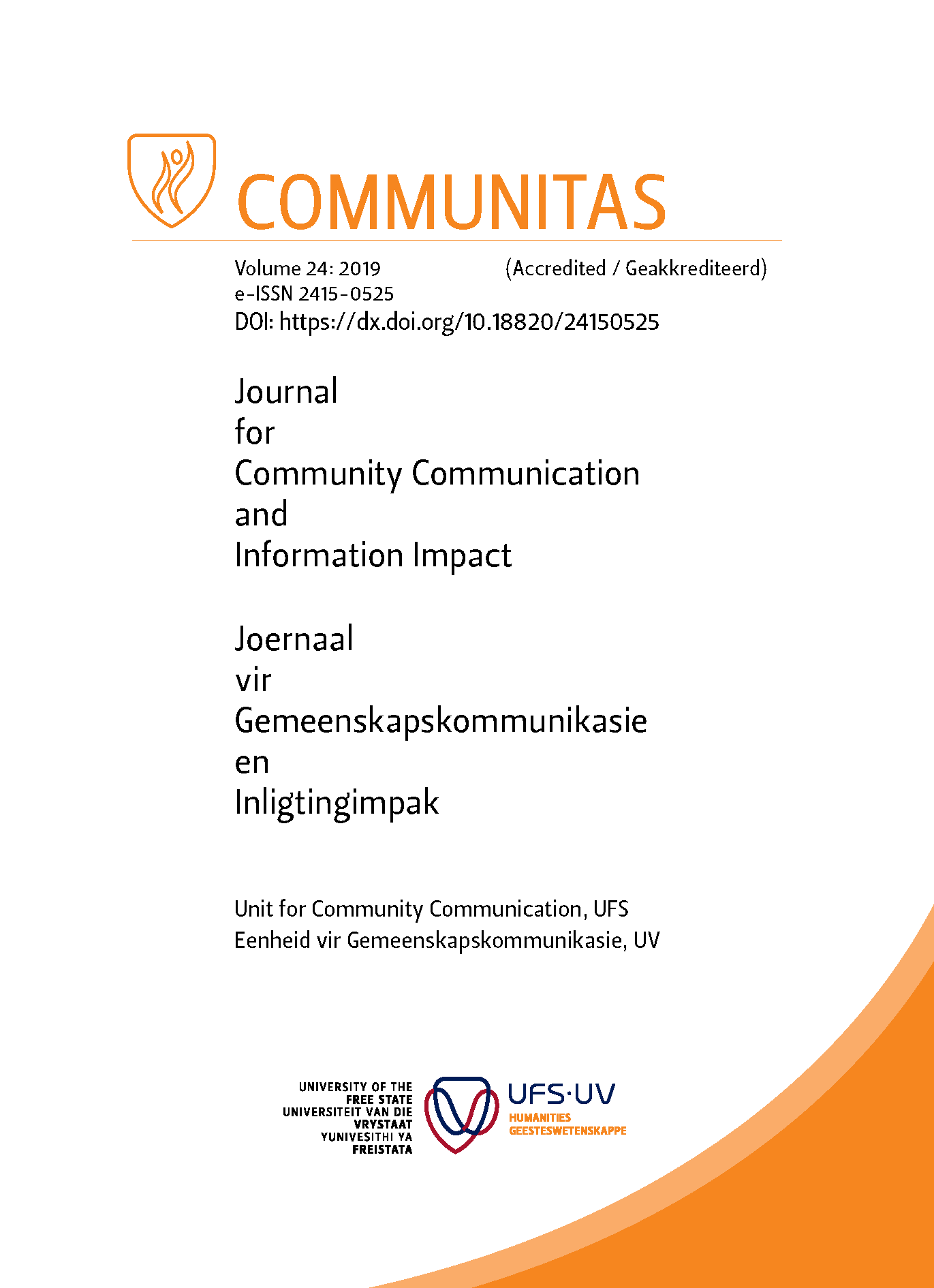Community perceptions of ward councillors' communication in service delivery protest areas: the desirability of a strategic communication approach
DOI:
https://doi.org/10.38140/com.v24i0.4016Keywords:
Ward councillors, Service delivery protests, Community members, Stakeholder theory, Stakeholder engagement, Strategic communication, Accountability, Collaboration, Self-organisation, Bottom-up communicationAbstract
Service delivery protests have increased alarmingly year-on-year. Protests appear to be community members’ only recourse in expressing their frustration concerning the perceived lack of delivery of municipal services. Indications are that a lack of engagement by ward councillors is adding greatly to these frustrations. At the same time, very little is known about how ward councillors communicate. The purpose of the study was to explore ward councillors’ current communication approach as perceived by community members in Sebokeng, known for the prevalence of former violent service delivery protests, and to evaluate the desirability of a strategic communication approach. Semi-structured in-depth interviews were conducted with six focus groups of different ages. The findings indicate that ward councillors are perceived as not visible to community members and that interactions with ward councillors are experienced as monologues and top-down. Consequently, community members feel unheard, forgotten, and ultimately disengaged. At the same time, community members express the need to self-organise and collaborate with ward councillors in solving community issues, as long as it is coupled with tangible delivery. The research provides insights into volatile community sentiments suggesting a pattern with previous findings, as well as suggestions for a strategic communication approach that may increase the legitimacy of ward councillors in communities.
Downloads
##submission.downloads##
Published
Issue
Section
License
All articles published in this journal are licensed under the Creative Commons Attribution 4.0 International (CC BY 4.0) license, unless otherwise stated.









